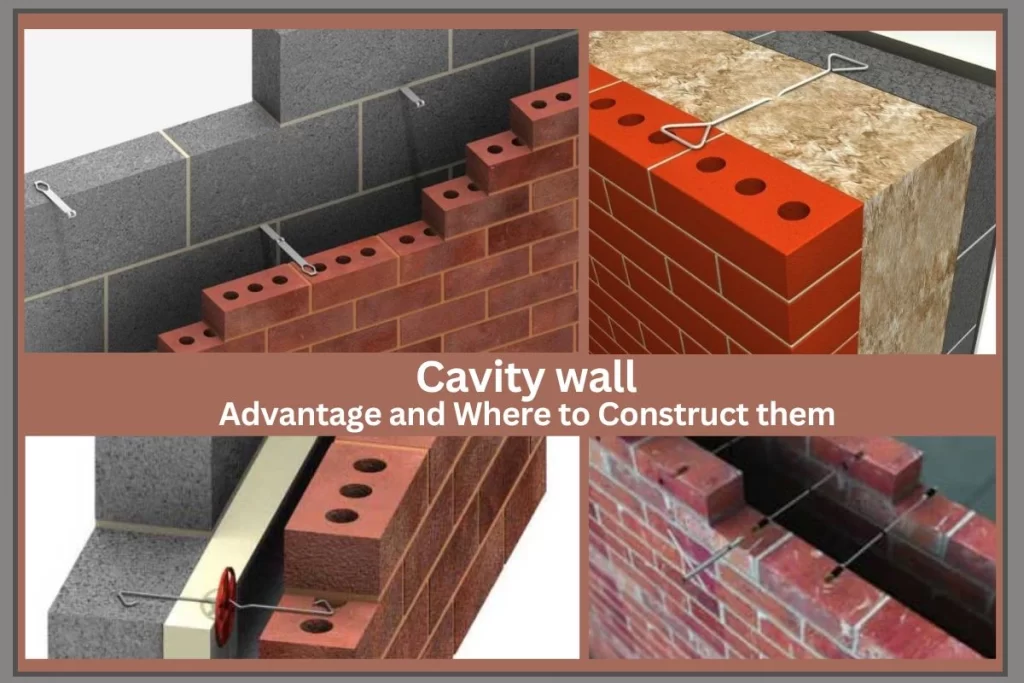What is a Cavity Wall?
A cavity wall consists of two parallel masonry layers, usually made of brick or concrete, separated by a gap. These layers are connected by metal ties, and the cavity is typically filled with insulation to reduce heat loss and improve energy efficiency. Introduced in the late 19th century, cavity walls were designed to solve the issues of traditional solid masonry walls, which, while strong, were poor insulators and allowed moisture penetration. The cavity design helps prevent moisture infiltration and enhances thermal insulation.
Advantages of Cavity Walls
Cavity walls offer several advantages over traditional solid walls, including:
- Damp Prevention
Damp prevention is essential to maintaining a healthy and comfortable living environment. Dampness in buildings can lead to a range of problems, including mildew growth and structural damage. Therefore, it is crucial to take proactive measures to prevent dampness from occurring. - Thermal Insulation
Thermal insulation is a material or technique used to reduce the transfer of heat between two surfaces or areas with different temperatures. It is an important aspect of building design, as it helps to regulate indoor temperatures, reduce energy consumption, and increase comfort levels. - Sound Insulation
Sound insulation, also known as acoustic insulation or soundproofing, is a technique used to reduce the amount of noise that travels between two spaces. Sound insulation is important in both residential and commercial settings, as it helps to improve privacy, reduce noise pollution, and increase comfort levels. - Efflorescence Prevention
Efflorescence is a common problem that occurs when water-soluble salts and other materials are brought to the surface of concrete or masonry surfaces, leaving behind a white or grayish powdery deposit. This can not only be unsightly, but it can also lead to the deterioration of the surface over time. - Increased Durability
The use of metal ties to connect the two layers of masonry in a cavity wall provides additional strength and stability, helping to prevent cracking and other structural problems. - Greater Design Flexibility
Cavity walls can be constructed using a variety of materials, including brick, concrete blocks, and stone. This allows architects and builders greater design flexibility. - Longevity
Cavity walls can last for many decades with minimal upkeep required.
Where to Construct a Cavity Wall?
Cavity walls are a type of construction where two layers of masonry are separated by a cavity or a space. The cavity is typically filled with insulation material to improve energy efficiency and provide sound insulation. Cavity walls are commonly used in residential and commercial construction, and they can be constructed in various locations depending on the building’s design and requirements.
Here are some common locations where cavity walls may be constructed:
- Cavity Wall at The Door or Window Openings
When constructing a cavity wall, special attention must be paid to the areas around door and window openings. These areas are called reveals, and they require extra care to ensure that the cavity wall system remains effective in providing insulation, weather resistance, and structural stability. - Cavity Wall in Roof
Cavity walls can also be used in roof construction to provide insulation, soundproofing, and structural stability. They are typically constructed between the rafters and designed to create an enclosed space filled with insulation material. This helps prevent heat loss and improve energy efficiency in the building. - Cavity Wall in Parapet Wall
A parapet wall is a low wall or railing that extends above the roofline of a building. Cavity walls can be used in parapet walls to provide insulation, soundproofing, and structural stability. Cavity walls in parapet walls are typically constructed between the inner and outer skins of the wall and are designed to create an enclosed space that is filled with insulation material. This helps to prevent heat loss and improve energy efficiency in the building.
Conclusion
Cavity walls provide several benefits for building construction. They offer enhanced thermal insulation, soundproofing, and structural stability, making them a popular choice for modern building design. Construction of cavity walls can be conducted in various areas of a building, such as a roof, parapet walls, and door or window openings, to improve energy efficiency and prevent heat loss. Proper construction materials, insulation, ventilation, flashing, and fire protection measures should be considered when constructing a cavity wall to ensure its effectiveness. By utilizing cavity walls in building construction, we can create comfortable and efficient living and working spaces that are durable and cost-effective. SRMPR Cements plays a key role in supplying high-quality materials for constructing cavity walls, ensuring that they are effective, durable, and energy-efficient.



